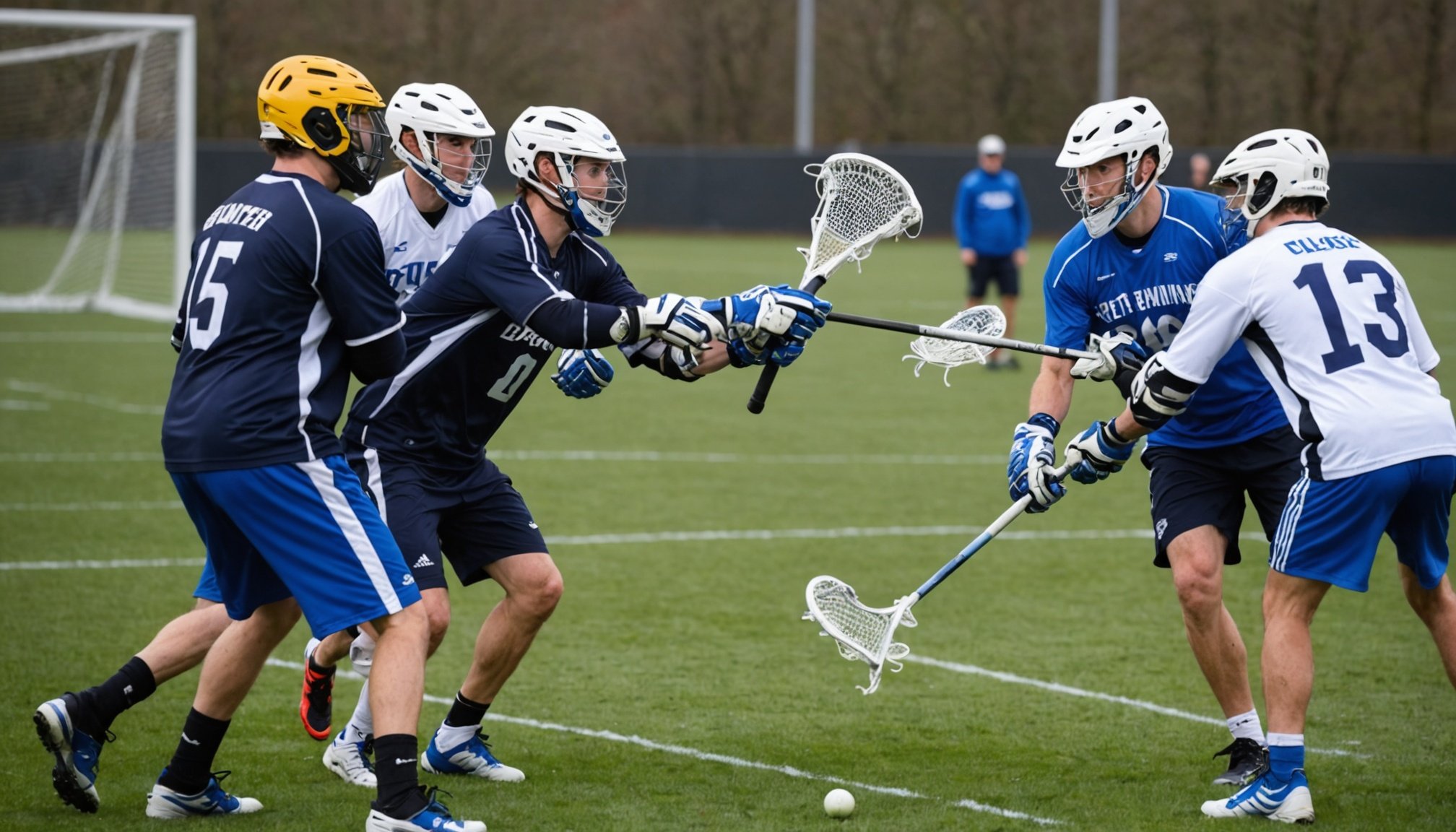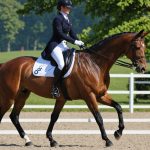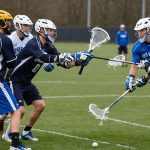Understanding Goalie Reflexes
Goalie reflexes are essential for a lacrosse goalie’s success. These reflexes refer to the quick, instinctive reactions that goalies use to block or catch the ball, responding swiftly to the game’s dynamic flow. In lacrosse, where the ball can travel at high speeds, the ability to react instantaneously is crucial.
The importance of reflexes in this sport cannot be overstated. Quick reflexes enable goalies to make split-second decisions to save shots, offering a greater chance of success. Effective reflexes also help in managing unexpected movements in player dynamics and altering game strategies effectively.
This might interest you : Essential injury prevention techniques for uk football teams: unveiling effective best practices
Reflex training techniques are vital for honing these skills. Traditional methods include repetitive drills that mimic actual game scenarios to build muscle memory. Goalies might train with tools like reaction balls or engage in exercises that enhance their visual tracking and decision-making under pressure.
Measuring reflexes is also possible through assessments that test a goalie’s response time and decision accuracy. Improvement can be achieved with consistent practice focused on speed and agility. By using tailored reflex training techniques, lacrosse goalies can enhance their performance and remain competitive in high-paced, intense matches.
Also to read : How can technology be utilized to improve athlete performance in UK sports?
Essential Techniques for Reflex Enhancement
Developing sharp reflexes is crucial for goalkeepers seeking to improve their performance. Incorporating effective techniques for goalies can make a significant difference in their ability to react swiftly and decisively. One primary focus is on physical conditioning exercises designed for reflex enhancement.
Physical conditioning involves targeted training methods that improve agility and reaction time. Exercises such as ladder drills, cone drills, and resistance band routines are excellent for honing quick movements and coordination. By engaging in these specific workouts, goalkeepers can build the necessary muscle memory and speed required during high-pressure situations on the field.
Equally important is the role of mental training techniques. These methods sharpen focus and decision-making skills, aiding goalies in staying alert and making rapid judgments during matches. Visualization, mindfulness practices, and reaction ball drills are practical tools that enhance a goalkeeper’s mental acuity. Regular practice of these techniques can lead to improved anticipation and quicker response to on-field scenarios.
In summary, the combination of physical and mental training methods plays a vital role in a goalkeeper’s reflex enhancement journey. Dedicating time to these exercises ensures goalies are well-prepared to meet the demands of their position confidently.
Effective Drills for Goalkeeper Training
Training a goalkeeper requires specialised drills to improve reflexes, agility, and decision-making skills. An effective goalkeeper drill focuses on enhancing these attributes during training sessions.
Reflex Drills for Goalkeepers
Goalkeeper reflex drills are crucial as they simulate real-game scenarios. One popular drill is the rapid-fire shot sequence. In this drill, the goalkeeper faces a series of shots delivered in quick succession from multiple angles. This helps improve reaction time and adaptability.
Implementing Drills in Training Sessions
To incorporate these drills, start with a basic warm-up to engage muscles. Follow with specific exercises to boost reflexes, such as short-distance shot stopping. Conclude with cooldown activities to prevent injury. Consistent repetition in training sessions ensures goalkeepers build skills progressively.
Adapting Drills for Different Skill Levels
It’s essential to tailor goalkeeper drills to suit various age groups and skill levels. For younger players, simplify drills by reducing speed and complexity. More experienced goalkeepers can handle heightened difficulty and speed. Modifying drills ensures each player reaches their potential while maintaining enjoyment and engagement.
Incorporating Technology in Training
Technology in sports is revolutionizing how athletes train, with goalkeeper-specific training at the forefront. Various technology tools, such as reaction balls and apps, assist in reflex training, helping athletes enhance their speed and precision. These tools provide real-time feedback and simulate unpredictable game scenarios, allowing players to refine their reactive skills effectively.
Training aids like goalie training equipment come in various forms and have distinct pros and cons. Reaction balls, for example, are simple yet effective, promoting agility and coordination without needing complex setups. Apps offer comprehensive training programs, tracking progress and offering personalised feedback but sometimes lack the tactile engagement of physical tools.
The future of technology in coaching and player development is promising. Emerging trends include virtual reality and AI-driven analysis, which can evaluate player performance in detail, offering insights beyond human capabilities. These advancements in technology in sports could revolutionize training methods, making them more adaptive to individual needs and potentially reducing injury risks. As technology evolves, its role in athletics will likely expand, providing more sophisticated and effective training aids that enhance performance on and off the field.
Safety Considerations and Best Practices
When engaging in reflex training sessions, ensuring safe training environments is crucial. Coaches must adhere to established safety protocols to protect athletes from potential injuries. Providing adequate training equipment and ensuring facilities meet safety standards are foundational steps.
Coaching guidelines strongly recommend frequent assessments of athletes to catch any early signs of distress or fatigue. This proactive approach is vital in maintaining the health and performance levels of goalies during intense training regimes. Ensuring that the athletes understand the exercises and are executing them correctly helps minimize errors that could lead to injury.
For injury prevention, it’s essential to focus on gradual progression in training intensity. Sudden increases in workload can place undue stress on muscles and joints, particularly for goalies, who require swift and explosive movements. Encouraging proper warm-up routines and cooldown sessions can aid in reducing the risk of strains and sprains.
Monitoring tools and regular medical check-ups provide additional layers of security, allowing for the tracking of an athlete’s condition over time. Coaches should foster an environment where athletes feel comfortable discussing any discomfort or health concerns without fearing negative repercussions. This open line of communication is pivotal in creating a safe training atmosphere.
Building a Supportive Coaching Environment
In the pursuit of excellence, a coach plays a pivotal role in shaping a positive environment. Coaching strategies become the backbone of any successful training regime, aiming to ignite enthusiasm and maintain unwavering commitment among players. The cornerstone of this dynamic lies in nurturing solid team dynamics through supportive practices.
A profound aspect of the coach’s role is in facilitating not just physical growth, but psychological resilience, especially for goalkeepers who face unique challenges. Employing strategies such as personalized goal-setting and reward systems can significantly boost motivation. Ensuring these measures are in place helps athletes remain focused and invested in their development journey.
Feedback serves as the lifeline of progress, being clear and timely in nature. By establishing transparent communication channels, coaches can enhance performance markedly. Constructive feedback allows for personal reflection and provides athletes with actionable insights to foster continuous improvement.
Regularly organizing team meetings and individual sessions encourages open dialogue, allowing players to voice concerns and celebrate achievements. This builds trust and reinforces a culture of mutual respect. The fusion of these elements forms a support knitwork, crucial for maintaining morale and achieving long-term success in any sporting venture.
Evaluation and Progress Tracking
Evaluating a goalkeeper’s performance and tracking their progress is crucial for continuous improvement. Proper performance evaluation methods are necessary to assess improvements in goalie reflexes over time. One effective approach is using video analysis. By reviewing recorded sessions, coaches can provide constructive feedback on specific aspects, such as positioning and decision-making.
This method allows for a detailed assessment by highlighting both strengths and areas needing enhancement. Players can then focus on making adjustments that elevate their overall game. Another key aspect is setting measurable goals. Establishing clear targets helps facilitate progress tracking.
When a goalkeeper meets or surpasses a defined objective, it becomes a moment to celebrate their progress, boosting motivation and confidence. Key performance indicators, such as save percentages or reaction times, can offer tangible insights into a player’s development.
Moreover, implementing consistent progress evaluations helps identify trends and highlight consistent qualities, further informing training decisions. Regular assessments of these metrics not only enable a clearer understanding of areas to improve but also serve to validate a goalkeeper’s dedication and hard work over time.
Community and Resources for Coaches
In the UK, lacrosse coaching resources are abundant and diverse, offering webinars, forums, and articles that cater to different aspects of the game. These resources often provide insights into strategy, skill development, and trends in lacrosse, ensuring that coaches stay updated and informed.
Community support plays a pivotal role in the world of UK lacrosse. Coaches benefit immensely from engaging in knowledge sharing through various coaching networks. These networks are a platform for exchanging tactics, discussing game rules, and sharing experiences, fostering a collaborative environment that enhances the coaching experience.
For those seeking to advance their careers, there are several relevant coaching certifications. Organizations such as England Lacrosse offer accredited programs designed to equip coaches with the necessary skills and qualifications. These certifications are not only a testament to a coach’s expertise but also a gateway to better opportunities within the sport.
Participating actively in the UK lacrosse community and leveraging available resources can significantly impact one’s coaching journey. Coaches are encouraged to tap into these resources, expand their knowledge, and build relationships that benefit their personal and professional growth in the lacrosse landscape.










